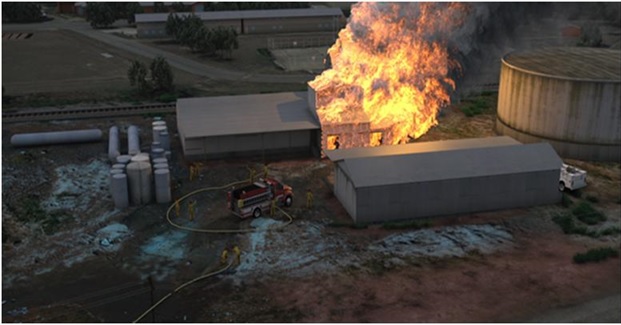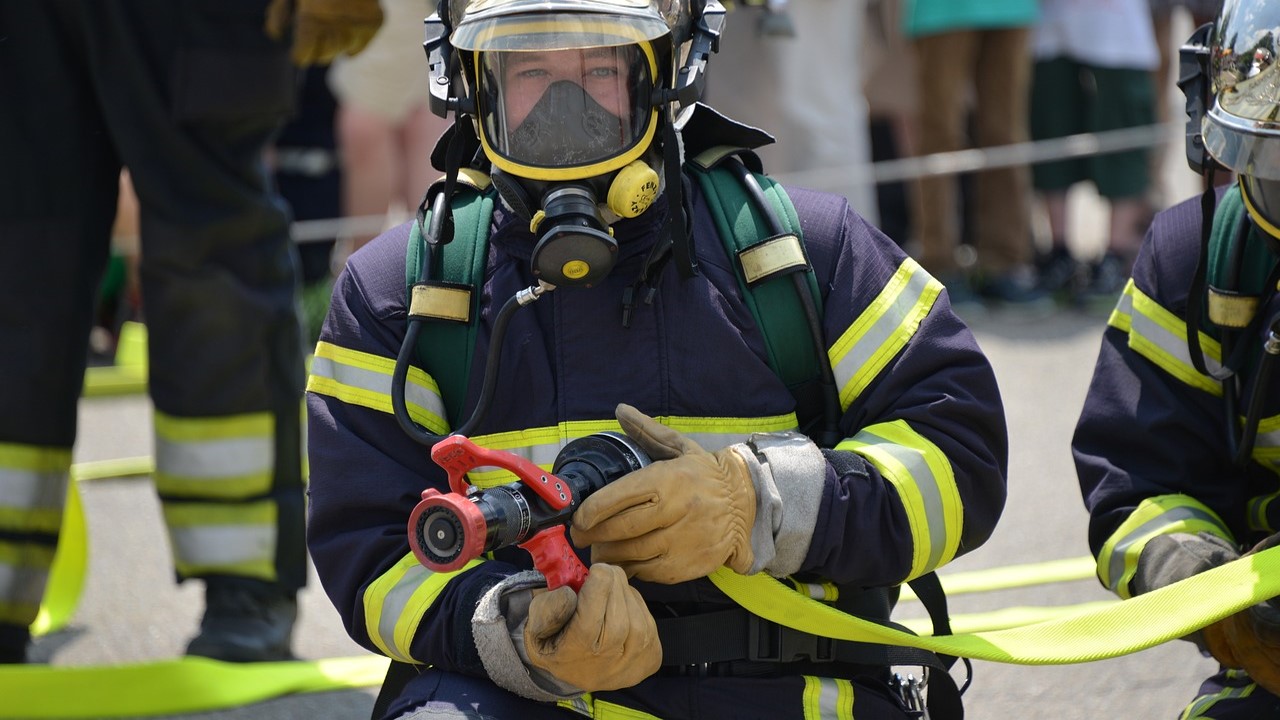“Show me a hero and I’ll write you a tragedy.” — F. Scott Fitzgerald
Being a firefighter is about as safe as any typical job in the United States. Fighting house fires is safer. Fighting industrial fires, on the other hand, is about as dangerous as the most dangerous jobs that are legal.
The Dangers of Firefighting
According to the Bureau of Labor Statistics (BLS), the fatality rate for commercial fishing in 2017, the most recent year for which there is data, was 100 fatalities per 100,000 full-time equivalents (FTEs). The fatality rate for loggers was 84 fatalities per 100,000 FTEs. For roofers, it was 45.
The fatality rate for firefighters in 2017 was 3.6 fatalities per 100,000 firefighters. That’s not much higher than the overall fatality rate reported by the BLS for the work force at large: 3.5 fatalities per 100,000 FTEs.
Organizations principally concerned with fire prevention look at fatality rates differently. Instead of fatalities per 100,000 FTEs, they look at fatalities per 100,000 fires. The more fires to which a firefighter responds, the more likely he or she is to be killed on the job. The United States Fire Administration, an agency of FEMA, has been tracking firefighter fatalities for decades. While the rate varies from year to year, it has averaged 3.2 fatalities per 100,000 fires over the last twenty years with a slight downward trend over time.
In 2017, there were 8 firefighter fatalities from fighting residential fires. Because of the sheer number of residential structure fires each year—379,000 in 2017—residential fires account for far more firefighter deaths than do industrial fires but at a rate of around 2 fatalities per 100,000 residential fires, making them among the safest fires to which firefighters respond.
Industrial fires, on the other hand, are the most dangerous fires to which a firefighter can respond. There were 8,500 industrial fires in 2017, with a fatality rate for fire fighters of 12 fatalities per 100,000 industrial fires. Fighting residential fires is less dangerous than the average job in the United States; fighting industrial fires is comparable to the most perilous jobs we have.
Firefighter Fatalities at Chemical Plants
One recent disaster was the pipeline explosion within the BASF facility at Ludwigshafen, Germany on October 17, 2016. Four were killed. One was a sailor on a nearby tanker ship, and three were firefighters from the company fire brigade. None were operators or mechanics.
On August 12, 2015, a fire and explosions at the Ruihai Logistics warehouse in Tianjin, China killed 173. Over half of them, 88, were firefighters who died responding to the fire at the warehouse, which contained miscellaneous chemicals, including flammables, corrosives, toxics, and oxidizers. There is widespread agreement that the firefighters had no idea of what they were up against.

West Fertilizer Company fire and explosion Photo credit: U.S. Chemical Safety Board
Before that, on April 17, 2013 in the United States, the fire and explosion of ammonium nitrate at the West Fertilizer Company facility in West, Texas killed fifteen, twelve of whom were firefighters.
OSHA’s regulations for emergency response, 29 CFR 1910.38 and 29 CFR 1910.120, require extensive planning and training. In regard to 29 CFR 1910.120, commonly known as “HazWOpER,” employers are exempted from developing emergency response plans for hazardous releases if they will “evacuate their employees from the danger area when an emergency occurs,” and “not permit any of their employees to assist in handling the emergency, so long as they provide an emergency action plan in accordance with 29 CFR 1910.38”. In turn, 29 CFR 1910.38 requires that an emergency action plan have procedures for reporting a fire or other emergency and plans for evacuation and rescue duties. The emphasis that both of these regulations place on evacuation has led many organizations to develop “No Heroes” policies.
Almost a year after the West Fertilizer disaster, the Dallas Morning News interviewed a surviving firefighter who insisted that once at the fire, every instinct would be to fight it—to put water on it. “You couldn’t have dragged me out of there.”
We are in the habit of calling firefighters who die while fighting a fire “heroes.” To the extent that these men and women were there to save the lives of others, they are heroes. But to the extent they are there to save assets and to protect property, then sadly, they were just victims. Lionizing fallen firefighters encourages a kind of “heroism” that gets emergency responders killed.
No Victims
It is important to understand what we expect in an emergency. To keep operating? Evacuation? Firefighting? A common scenario in PHAs is the case during an external fire of a blocked-in pressure vessel, which then overpressures and explodes. When evaluating the consequences of such a scenario, PHA teams usually conclude that fatalities are unlikely. The teams recognize that during an external fire large enough to cause overpressure, personnel do not break out the sticks and marshmallows; they evacuate.
When asked whether firefighters will be in the area responding to the fire, though, PHA teams typically hesitate. They don’t know what firefighters will do. Often, they don’t know what firefighters should do. They all agree, however, that there is nothing in that vessel that is worth dying for. PHA teams do not want to see victims, whether they are operating and maintenance personnel or first responders. As long as firefighters respond to chemical disasters, however, we should continue to expect victims.
Plan for Disaster
The worst time to plan for an emergency is during the emergency. When firefighters show up at a fire, their plan is to “put water on it.” Unless other plans are already in place, the default plan will be to fight the fire.
Increasingly, we recognize that once everyone is safely out, including firefighters themselves, there is no property worth dying for. We know that what we need from firefighters is the rescue of personnel. In our heart of hearts, though, we are still looking for heroes to save our stuff.
Preparing an emergency action plan is not just an exercise to satisfy a regulatory requirement. It is a mechanism for anticipating what can go wrong and preparing for it. It is not enough for a facility to have an emergency action plan; the facility must share it with everyone that has a role to play in that emergency. Within the facility, this can be a challenge, but a challenge that can be overcome with determination and leadership from senior management.
Outside of the facility, sharing the plan is more than a challenge. It can sometimes seem an insurmountable problem. While motivational speakers are fond of saying that “there are no problems, only opportunities,” some opportunities are much more intractable than others. Convincing a local fire department that is struggling with limited resources that it wants to meet with us to plan for emergencies can be a major hurdle, especially when we are also struggling with limited resources. However, overcoming the obstacle is something we must do, and it is on us to make it happen.
Share Our Plans
When a disaster happens and firefighters die, it is not the fire department that makes the headlines. It’s the facility. Make sure we’ve planned for each emergency, that we know what to expect, and that the first responders upon whom we rely know what to expect. Share our plans and make sure everyone gets it. Facilities can be built again, but a fallen firefighter is fallen forever.
This blog is based on an earlier version, “Do You Need a Hero? Emergency Action Plans”, posted on 8-Dec-2016 by Elsevier in Chemicals & Materials Now!
